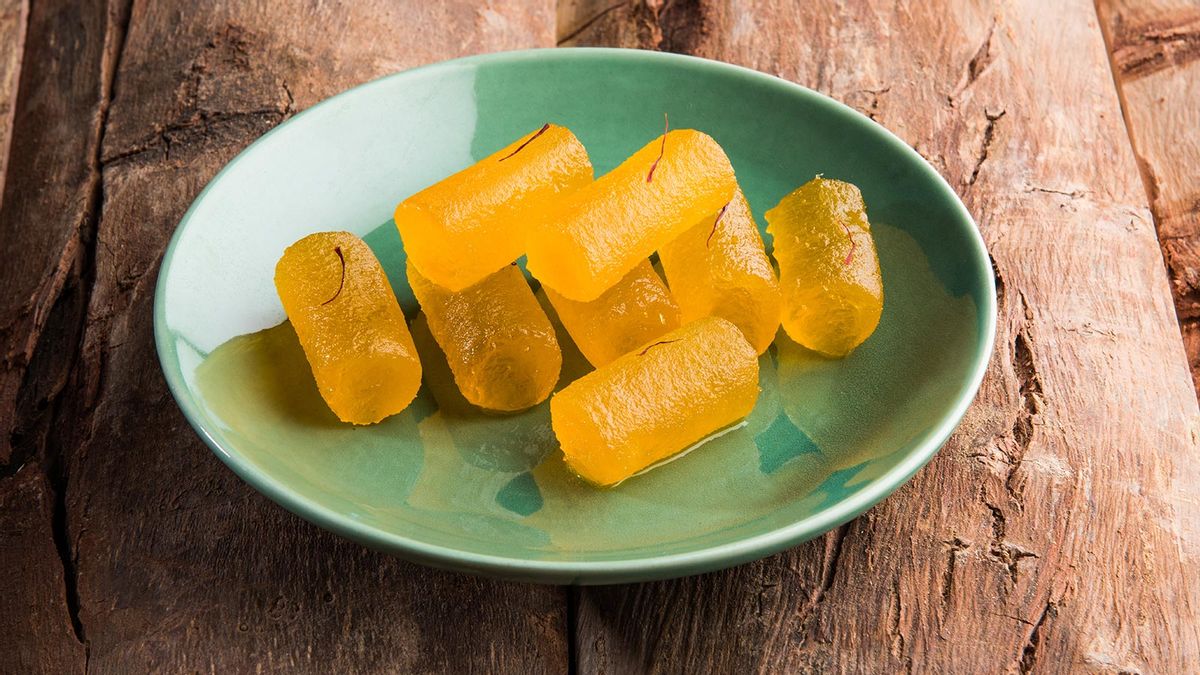Talk of Agra is incomplete without its famous petha - the sugary, syrupy, translucent sweet, made from the very common pumpkin. It may be unique to Agra but Petha is made by halwais all over India. You must especially try the pethas made in the northern belt, where cooks have experimented with various flavours and textures. No visitor to the Taj Mahal city can return without a bundle of this vegetable-based sweetmeat that has quite a fan following.
Halwais in Agra tell us the story of the ‘petha’, which goes back almost 350 years, to Shah Jahan’s regime, the Mughal emperor. It is said to have been cooked for the first time in the royal kitchens when the Taj Mahal was being built. According to popular folklore, workers at the monument were bored with the daily meal of dal and roti and were not eating properly. It became a matter of concern for the emperor, who confided in the master architect Ustad Isa Effendi. He, in turn, asked the Pir Naqshbandi Sahib for help. The Pir is said to have gone into a trance during prayers one day and received the recipe for the ‘petha’ from the Almighty. Around 500 cooks were pressed into service to make the petha for the workers. Since then, it has remained Agra’s most famous export.
Today, Agra’s Noori Gate area is home to more than 700 cottage units that manufacture pethas. The most famous and biggest petha supplier of them is Panchhi Petha, with branches all over the country. There are several other stores but Panchhi, started by Seth Pancham Lal Goyal, a 24-year-old entrepreneur, over 70 years ago, remains a favourite.
The original dry, plain translucent petha is the classic authentic version of the sweet. However, you will now find many varieties of pethas in different flavours. Expect to try chocolate, coconut, kesar angoori, mango, orange, pineapple, paan, almond and cherry, to name a few. There are also variants like Petha Gulab Ladoo, Kancha Petha, Sandwich Petha and Doda Petha.
Entrepreneurs have also introduced sugar-free varieties of petha. It’s been a long journey for a humble sweet from the emperor’s kitchen made only from ash gourd, sugar and water to the diabetic thali of today!
Traditional Petha Recipe
Made of: Raw petha (pumpkin), sugar and original flavour cardamom
Ingredients
1 kg white pumpkin (firm)
2 tsp kitchen lime (calcium hydroxide)
1/2 tsp fitkari (alum powder)
3 drops kewra (screwpine essence)
800 gm sugar
1 tsp rose water
2 cups of water
Method
- Dissolve alum powder in 1/2 cup of water and keep aside.
- Dissolve kitchen lime in 1 litre of water, strain with a clean cloth and keep aside.
- Wash, peel and deseed the pumpkin. Cut into 1-inch square pieces and prick the pieces with a fork all over.
- Soak the pieces in lime water for 30 minutes.
- Drain the lime water and wash the pieces under clean running water.
- Pour alum water on the pieces till they are evenly coated. Drain the alum water.
- In a heavy-bottomed pan, boil the pumpkin pieces till they become soft and transparent.
- Prepare sugar syrup of two-thread consistency.
- Put the boiled pumpkin pieces in the sugar syrup and boil till the syrup is thick again.
- Turn off the flame and take out the pieces. Keep just the syrup covered with a mesh overnight.
- Next day, once again boil the syrup and add the pieces.
- Cook it for 3-4 minutes and turn off the flame. Let the pieces cool.
- Sprinkle kewra and rose water over the pieces and allow the petha to cool completely before refrigerating.


